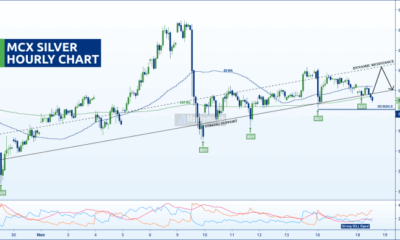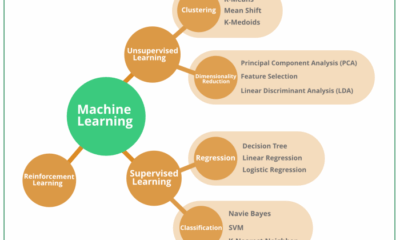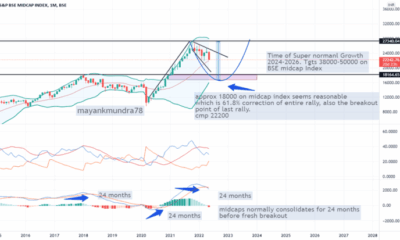Business Strategy
Exploring the Impact of Digilife Digital Transformation Performance Metrics

In the realm of modern businesses, the integration of digilife and digital transformation has become crucial for organizational success. This article delves into the significance of performance metrics in measuring the effectiveness of digital transformation strategies, offering insights into key challenges and effective measurement strategies.
As we navigate through the intricacies of digilife digital transformation performance metrics, a deeper understanding of how businesses leverage this data to drive innovation and growth unfolds.
Understanding Digilife Digital Transformation

Digilife in the context of businesses refers to the integration of digital technologies into all aspects of a company's operations, fundamentally changing how they operate and deliver value to customers. Digital transformation, on the other hand, involves using digital technologies to create new or modify existing business processes, culture, and customer experiences to meet changing market requirements.
Importance of Digital Transformation
- Enhanced customer experience: Digital transformation allows businesses to better understand and engage with their customers through personalized experiences and streamlined processes.
- Operational efficiency: By digitizing processes and operations, companies can eliminate manual tasks, reduce errors, and improve overall efficiency.
- Competitive advantage: Embracing digital transformation enables organizations to stay ahead of the competition by adapting to market trends and evolving customer needs.
Examples of Digilife Impact on Digital Transformation Initiatives
- Implementation of cloud computing solutions to improve scalability and accessibility of data and applications.
- Integration of artificial intelligence and machine learning technologies to automate processes and gain valuable insights from data.
- Utilization of data analytics to make informed decisions and optimize business strategies based on real-time information.
Key Drivers Towards Digital Transformation
- Rapid technological advancements: The fast-paced evolution of technology compels companies to adapt and innovate to remain competitive in the digital age.
- Changing customer expectations: Consumers now expect seamless digital experiences, prompting businesses to transform their operations to meet these demands.
- Increase in data volume: The exponential growth of data requires organizations to leverage digital tools for efficient data management and analysis.
Performance Metrics in Digital Transformation
Performance metrics play a crucial role in measuring the success of digital transformation initiatives. By setting measurable indicators, organizations can track progress, identify areas for improvement, and ensure alignment with strategic objectives.
Common Performance Metrics
- ROI (Return on Investment): Measures the financial gains or benefits obtained from digital transformation investments.
- Customer Satisfaction Score: Gauges customer satisfaction levels before and after digital transformation efforts.
- Employee Engagement: Assesses the impact of digital initiatives on employee motivation, productivity, and satisfaction.
- Digital Adoption Rate: Tracks how quickly employees and customers adopt new digital tools and technologies.
Importance of Performance Metrics
Setting measurable performance indicators is essential in digital transformation projects as it provides a clear understanding of the impact of the initiatives. It helps in aligning efforts with organizational goals, identifying areas of improvement, and ensuring accountability.
Specific Metrics for Digilife Digital Transformation
- Number of Active Users on the Digilife Platform: Indicates the level of engagement and adoption of digital services.
- Time Spent on the Platform: Reflects user interest and satisfaction with the digital experience provided.
- Conversion Rate from Traditional Services to Digital Services: Measures the success of transitioning customers to digital channels.
- Cost Savings from Digital Initiatives: Quantifies the financial benefits derived from digital transformation efforts.
Key Challenges in Measuring Performance
Accurately measuring the performance of digital transformation initiatives poses several challenges for organizations. These challenges can hinder the ability to effectively evaluate progress and make informed decisions regarding digital transformation strategies.
Data Quality and Availability
One of the key challenges in measuring performance is the quality and availability of data. Organizations may struggle to access relevant data or may have incomplete or inaccurate data, leading to skewed performance metrics.
Complexity of Metrics
Another challenge is the complexity of performance metrics in the context of digital transformation
Resistance to Change
Resistance to change within the organization can also impede accurate performance measurement. If employees are not aligned with the digital transformation goals or resist adopting new technologies and processes, it can affect the data collected and the overall assessment of progress.
Interpretation and Analysis
Interpreting and analyzing the performance data collected can be challenging, especially when there are varying interpretations of the metrics or disagreements on the significance of certain results. This can lead to misunderstandings and misaligned expectations regarding the progress of digital transformation initiatives.
Impact of Inaccurate Measurement
When performance metrics are inaccurately measured, organizations may make decisions based on flawed data, leading to misguided strategies and investments. This can result in wasted resources, missed opportunities, and ultimately, failed digital transformation outcomes.
Strategies for Improvement
To overcome these challenges and improve the measurement of performance metrics in digital transformation, organizations can implement strategies such as:
- Ensuring data quality through data cleansing and verification processes.
- Aligning performance metrics with strategic goals to focus on relevant indicators.
- Providing training and support to employees to encourage adoption of new technologies and processes.
- Establishing clear communication channels for interpreting and sharing performance data across the organization.
- Regularly reviewing and adjusting metrics based on feedback and insights to ensure their relevance and accuracy.
Implementing Effective Performance Measurement Strategies
Implementing effective performance measurement strategies is crucial for organizations undergoing digilife digital transformation. By designing and implementing robust measurement approaches, companies can track their progress, identify areas for improvement, and ensure the success of their digital initiatives.
Role of Technology in Performance Measurement
- Utilize advanced analytics tools to collect and analyze data in real-time.
- Implement AI and machine learning algorithms to generate insights and predictions based on performance metrics.
- Leverage automation technologies to streamline data collection processes and reduce manual errors.
Best Practices for Enhancing Performance Measurement
- Define clear and measurable KPIs aligned with digital transformation goals.
- Regularly monitor and review performance metrics to ensure ongoing improvement.
- Encourage a data-driven culture within the organization to prioritize performance measurement.
- Invest in training and upskilling employees on data analysis and interpretation.
Successful Implementation Examples
- A retail company implemented a real-time dashboard to track online sales performance and optimize marketing strategies based on customer behavior data.
- A healthcare organization utilized predictive analytics to forecast patient outcomes and optimize resource allocation for better patient care.
- An e-commerce platform implemented A/B testing to measure the impact of website changes on conversion rates and user engagement.
Final Summary
In conclusion, the quest for optimal digital transformation outcomes relies heavily on the meticulous analysis and interpretation of performance metrics. By embracing best practices and overcoming challenges, organizations can steer their digilife initiatives towards greater efficiency and competitiveness in the digital landscape.
Answers to Common Questions
How do performance metrics contribute to the success of digital transformation initiatives?
Performance metrics provide tangible data points that allow organizations to track progress, identify areas for improvement, and measure the impact of digital transformation efforts.
What are some common challenges faced in measuring the performance of digital transformation projects?
Common challenges include data silos, resistance to change, and the lack of standardized measurement frameworks. Overcoming these obstacles requires a strategic approach and cross-functional collaboration.
Why is it essential to set measurable performance indicators in digital transformation projects?
Measurable performance indicators provide clarity and direction, enabling organizations to define success criteria, monitor progress, and make informed decisions throughout the digital transformation journey.

-

 Investing2 months ago
Investing2 months agoSilver MCX Live Price with Real Time Updates: A Comprehensive Guide
-

 Business2 months ago
Business2 months agoExploring Digilifes Digital Transformation Case Studies
-

 Trading2 months ago
Trading2 months agoSilver MCX Live Price Real Time Updates: Stay Ahead in the Trading Game
-

 technology2 months ago
technology2 months agoExploring Machine Learning Algorithms: A Comprehensive Guide
-

 Finance2 months ago
Finance2 months agoExploring BSE Midcap Index Today Market Insights
-

 technology2 months ago
technology2 months agoUnveiling the Power of Digilife Business Intelligence Solutions
-

 technology2 months ago
technology2 months agoUnveiling the Future: Digilife Global Technology Trends 2025
-

 Personal Finance2 months ago
Personal Finance2 months agoCrafting Your Wealth: Smart Dollar Wealth Building Strategies


